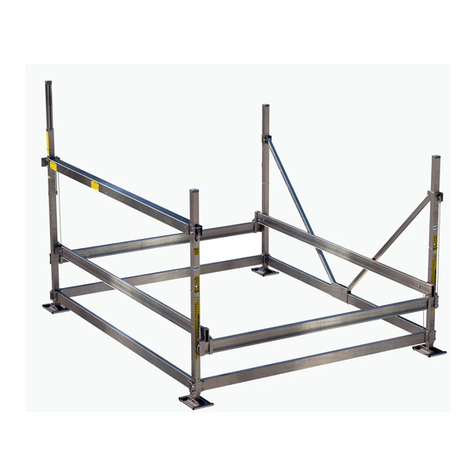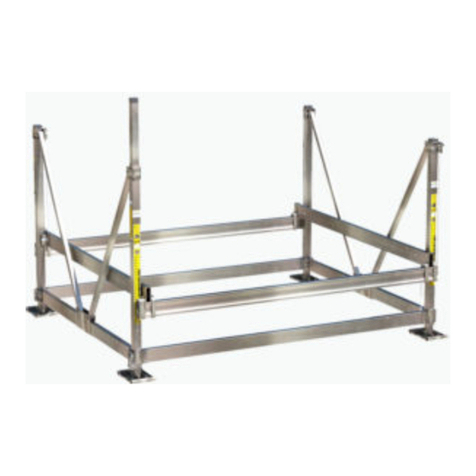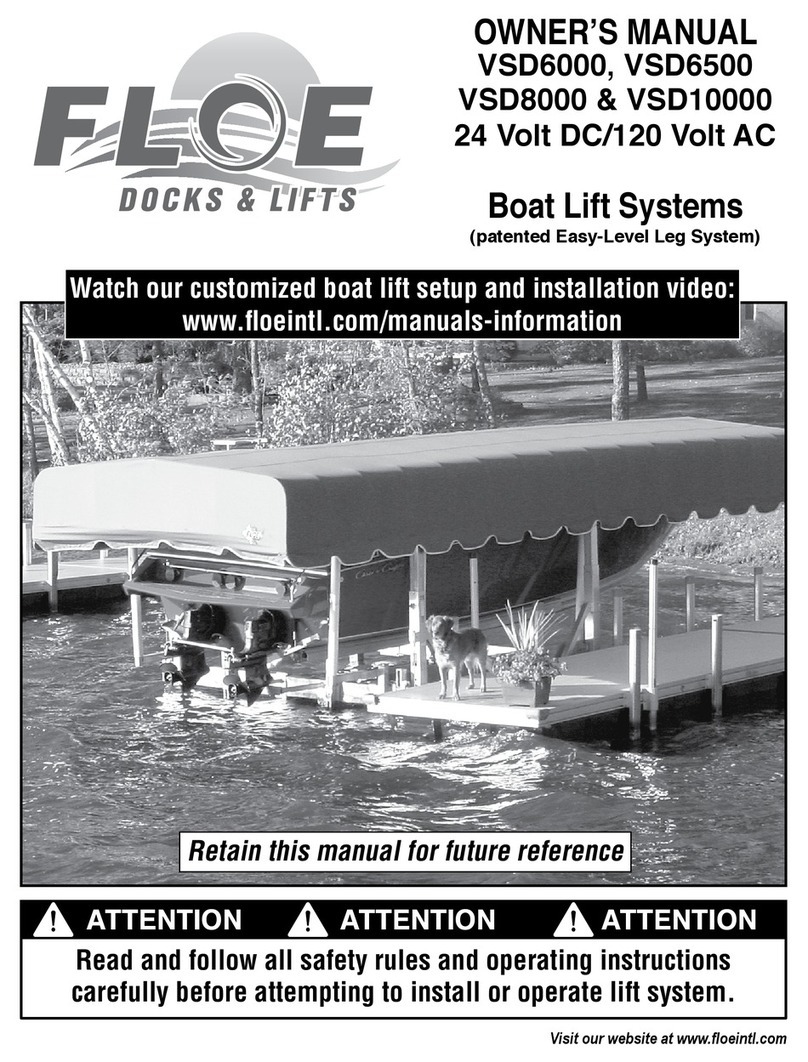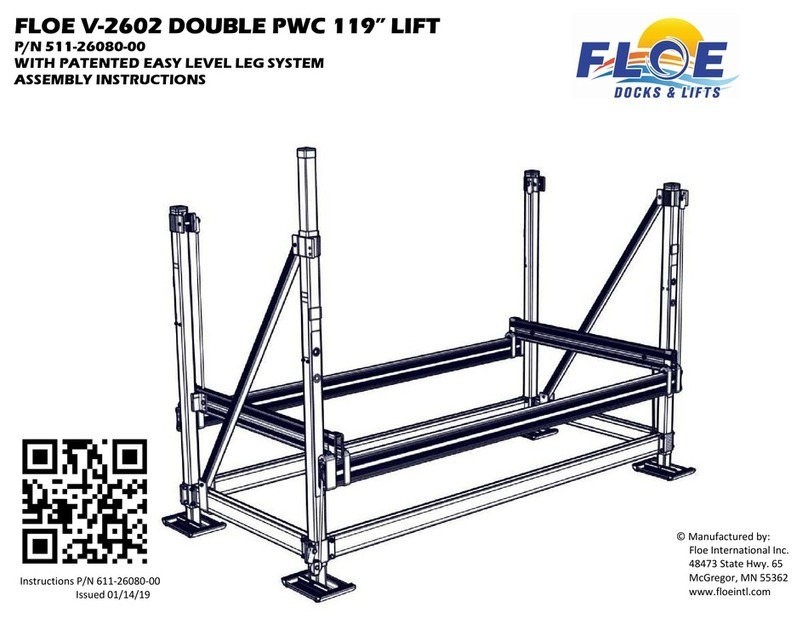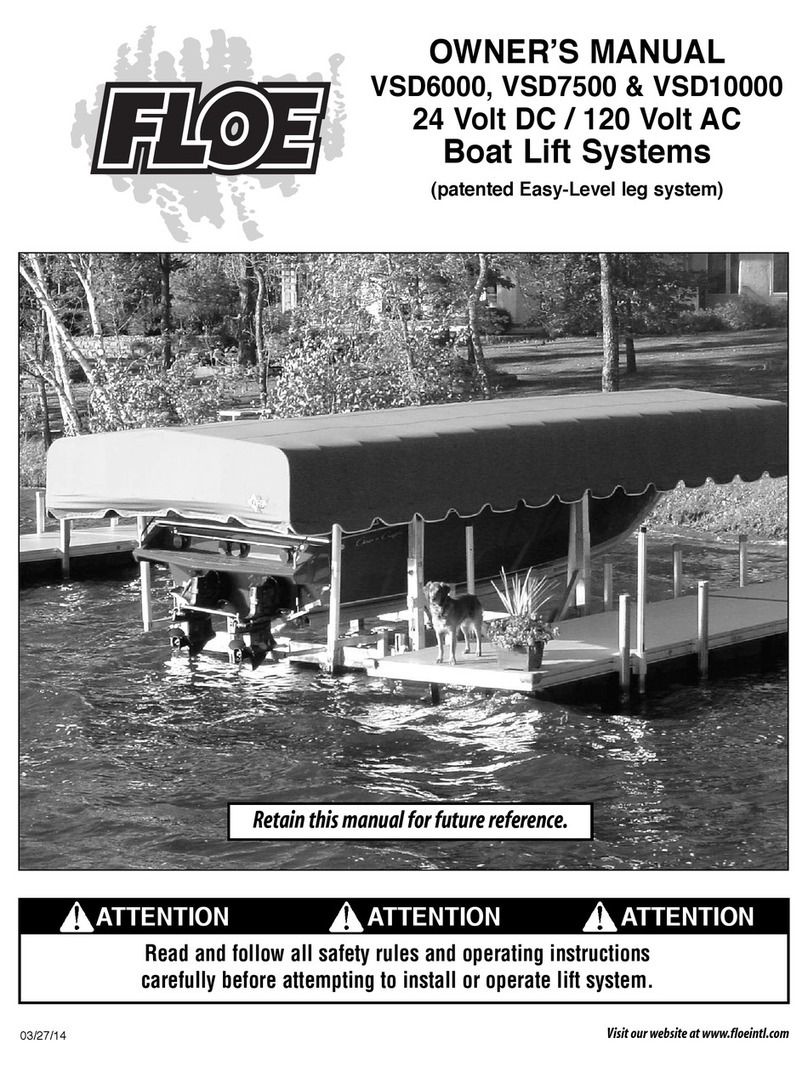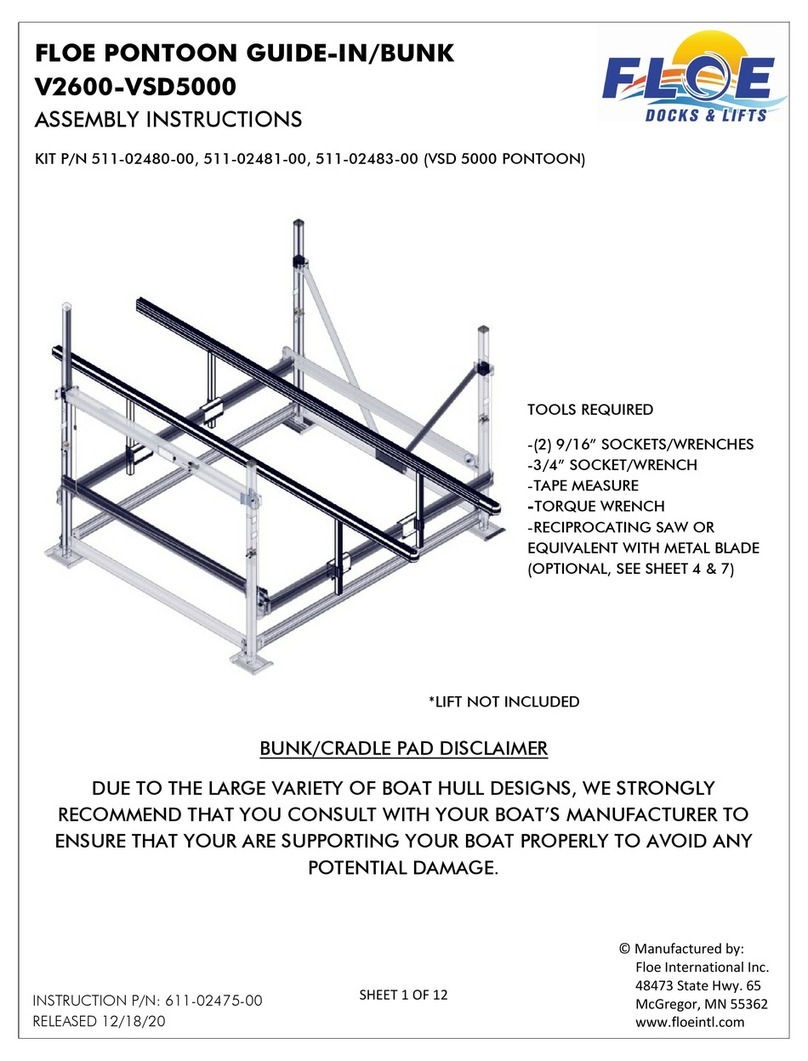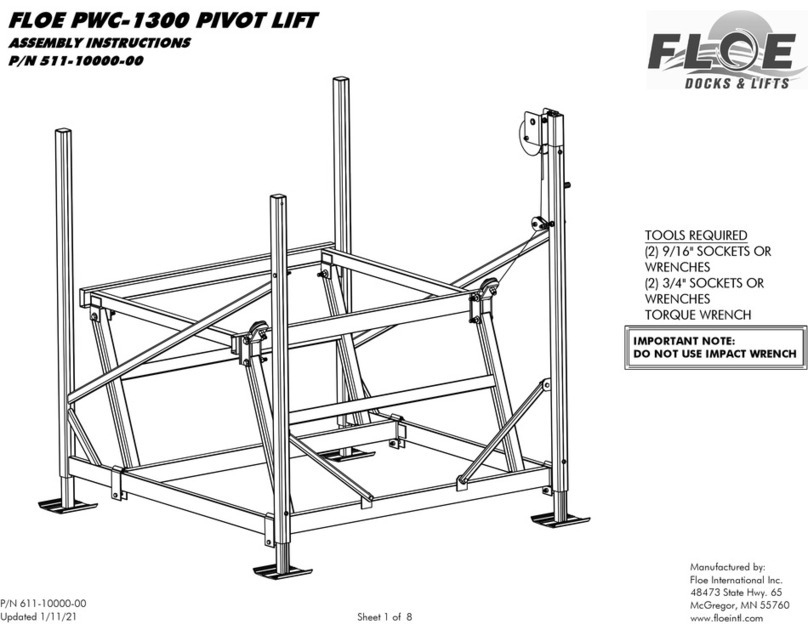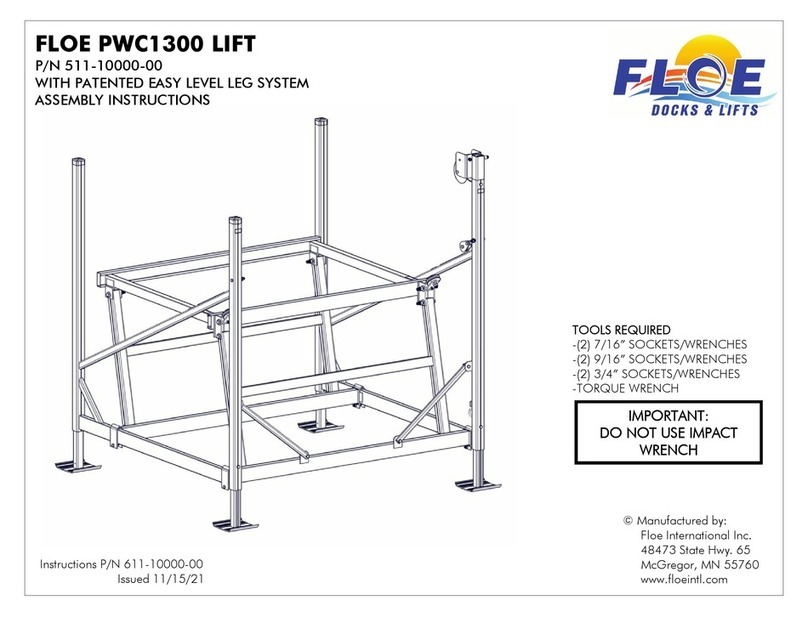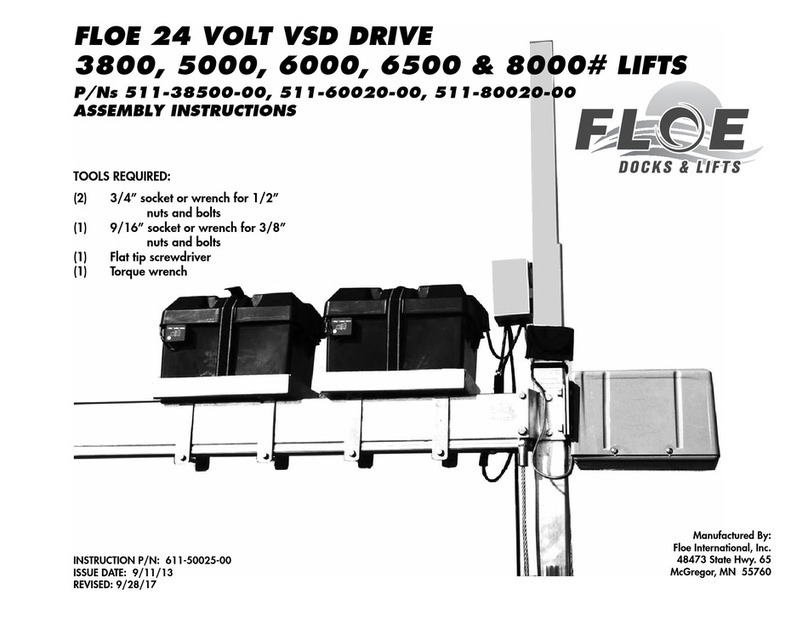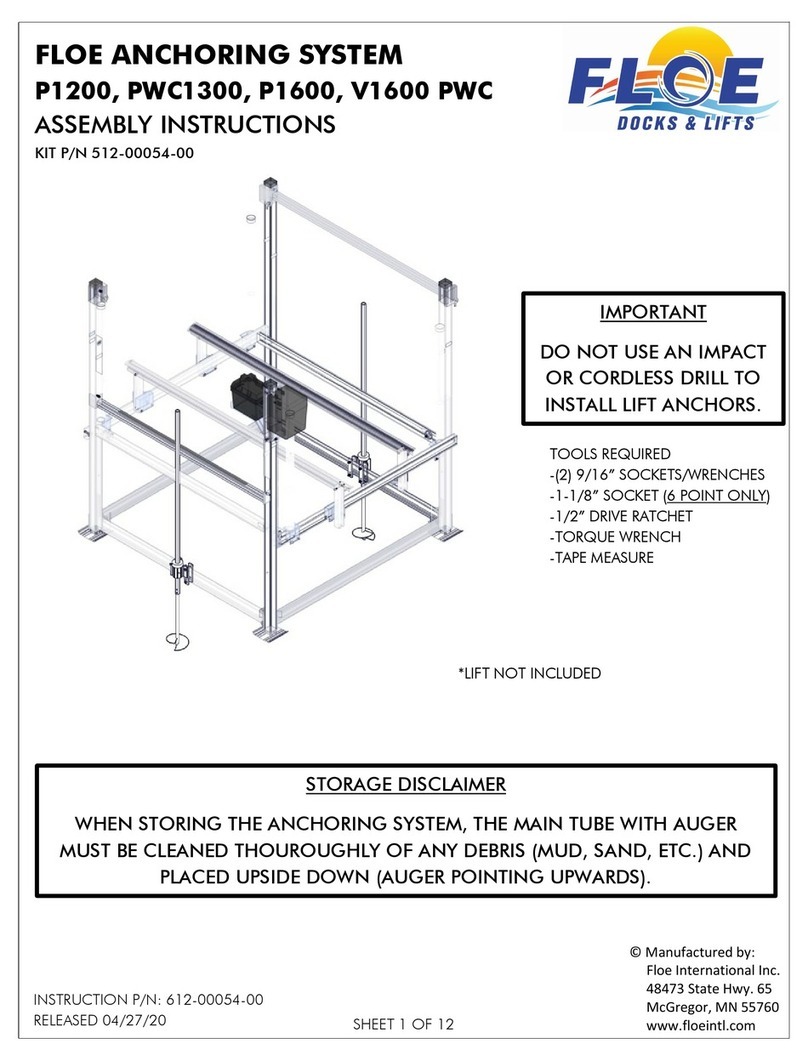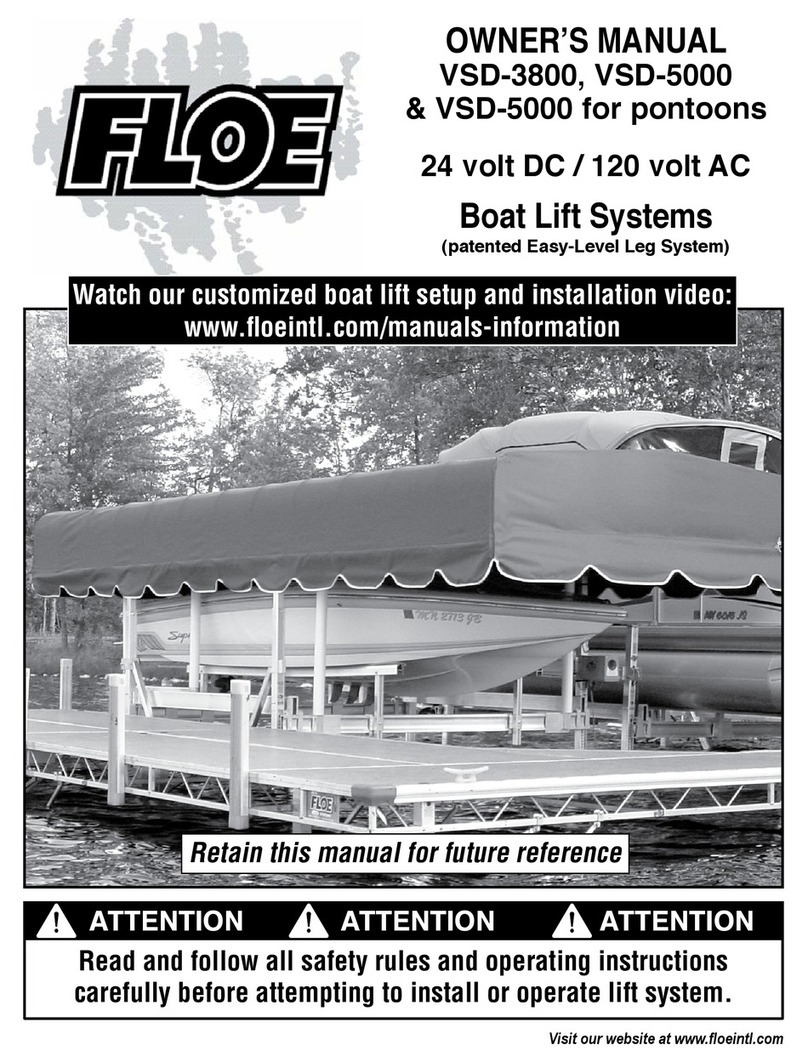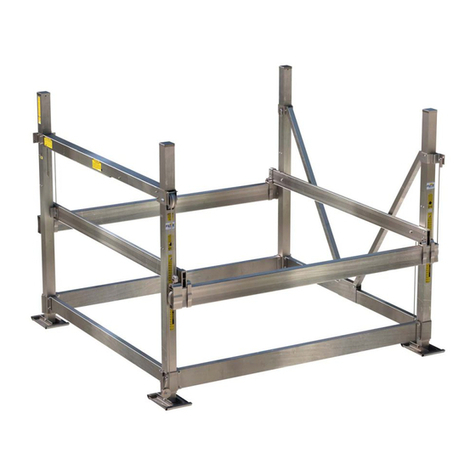
6
LIFT CAPACITIES
It’s recommended that the total loaded weight of
the water craft doesn’t exceed 75-85% of the to-
tal lift capacity. The total capacity of a lift is the
combined capacity of each of the boat lifts two
main lifting beams.
Never exceed the weight capacity of either main
lift beam. For instance a 5,000 lb capacity boat lift
is limited to 2,500 lbs for each main lift beam. It is
very easy for a 4,000 lb boat to exceed the capac-
ity of a 5,000 lb boat lift by not parking on the lift in
the correct position.
BEFORE PUTTING A BOAT ON THE
LIFT YOU NEED TO KNOW THREE
VERY IMPORTANT THINGS:
1. Determine the total loaded boat weight?
Weigh your boat loaded with fuel, water and ev-
erything in that you could ever have in it when it is
parked on the boat lift. Not all manufacturers pub-
lished boat weights are accurate because they
don’t account for motors, gear, fuel, water, etc.
2. Determine the boats center of gravity or CG?
A boat’s CG is the location under the boat hull
which the boat will balance if sitting on a narrow
object ((Illustration A). Your dealer or the manu-
facturer of the boat should be able to help you
locate the boat’s CG. Be sure that the motor and
gear weight have been taken into consideration.
Never exceed the lift’s rated capacity. Doing
so could cause structural/mechanical failure
and serious injury or death.
WARNING
3. Determine that the boats center of gravity (CG)
is centered between the two main lift beams
The boat should be parked so that the boat’s CG
or balance point is centered between the two
main lift beams (Illustration B). Each of the lift
beams should be supporting the same amount of
weight.
Once you know that your boat is well within the
boat lifts rated capacity and the location of the
boat’s CG develop a positioning method that will
ensure that all users of the boat lift will park with
the Boat’s CG in the center of the lift. Here are a
couple of suggestions to do this consitently:
• Use a motor stop.
• Note the proper location of the boat on the lift
and use some sort of marking system or labels.
• If equipped with canopy, center the canopy
over the boat when the boat’s CG is in the
center of the lift, park with the boat centered
under the canopy.
• You can even hang an object such as a
tennis ball so it just touches the windshield
when the boat is properly positioned.
If your boat is not positioned properly, you can
extremely overload one of the main lifting beams
(See Illustration C, below).
Illustration A: above shows the boat’s balance
point of center of gravity (CG).
x
Illustration B: shows the boat’s center of gravity
(CG) centered between the two main lift beams
– each of the lift beams is supporting the same
amount of weight.
Illustration C: shows a boat’s center of gravity
(CG) improperly positioned so that it extremely
overloads one of the main lifting beams.












